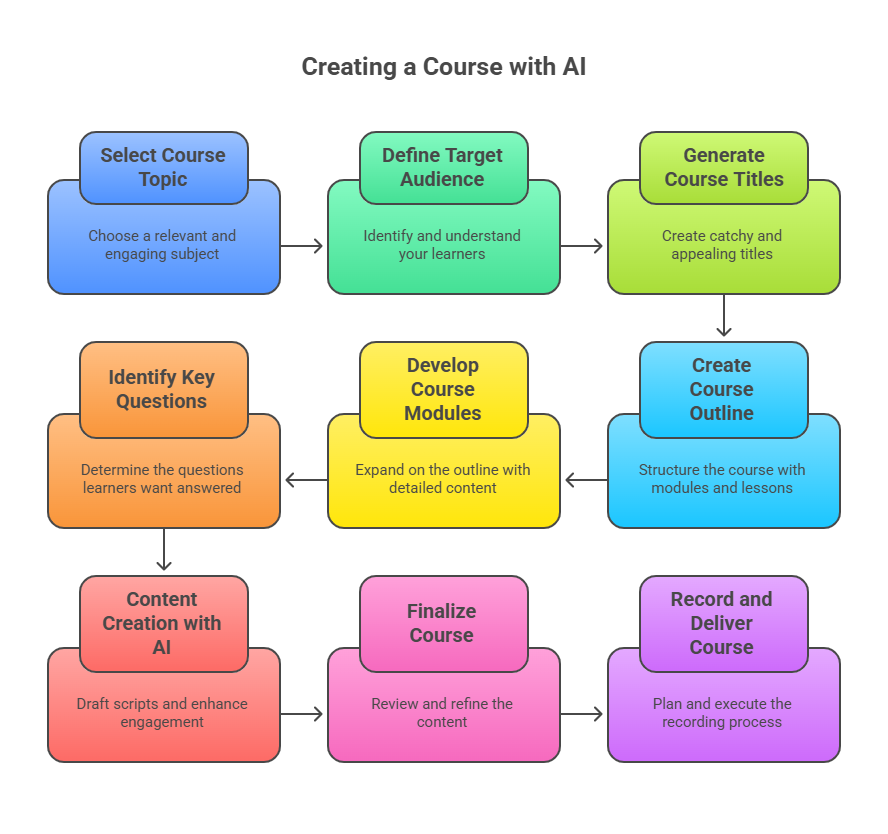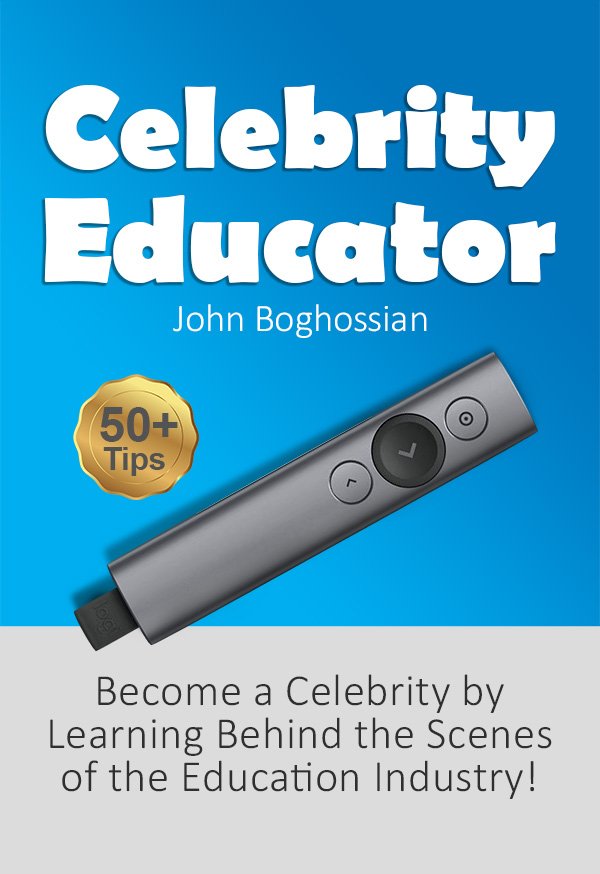Contents
- 1 1. Selecting the Course Topic
- 2 2. Defining Your Audience
- 3 3. Generating Course Titles
- 4 4. Creating a Course Outline
- 5 5. Developing Course Modules
- 6 6. Identifying Key Questions
- 7 7. Content Creation with AI
- 8 8. Finalizing Your Course
- 9 9. Recording and Delivering Your Course
- 10 Conclusion: Embracing AI in Education
In today’s fast-paced world, the ability to create educational content quickly and efficiently is more important than ever. With advancements in technology, particularly artificial intelligence (AI), educators and content creators can streamline the process of course development. This blog post will explore how you can leverage AI to create a comprehensive educational course in a fraction of the time it would typically take. We’ll cover various steps, tools, and tips that can help you produce a quality course with ease.
AI has revolutionized various fields, and education is no exception. By utilizing AI tools, you can automate many aspects of course development, allowing you to focus on content quality and engagement. From generating course titles to outlining content and answering frequently asked questions, AI can greatly enhance your productivity. This section will delve into the specific ways AI can assist you in creating a course.
1. Selecting the Course Topic
The first step in creating an educational course is selecting a relevant and engaging topic. Utilizing AI tools can help you brainstorm and refine your ideas swiftly. For instance, using a platform like Gemini, you can input your desired course subject and let the AI generate various topic ideas.
For example, if you want to create a course on Instagram marketing, you can simply type, “I want to create a course on Instagram.” The AI will provide you with suggestions based on current trends and interests.
2. Defining Your Audience
Understanding your target audience is crucial for developing effective course content. AI can assist in defining your audience by analyzing demographics and preferences. Once you identify your audience, you can tailor your content to meet their specific needs. For example, if your course is aimed at teenagers interested in making money on Instagram, you can specify this in your AI prompts.
3. Generating Course Titles
Once you have your topic and audience defined, the next step is to generate catchy course titles. AI can suggest various titles that resonate with your target demographic. For example, titles like “Instagram Success for Gen Z” or “Monetizing Instagram: A Teen’s Guide” can be generated quickly. This saves you hours of brainstorming and helps you focus on more critical aspects of course design.
4. Creating a Course Outline
With a title in mind, the next step is to create a structured outline for your course. AI can help you generate detailed course modules and lessons, ensuring that the content flows logically and covers all necessary topics. You can specify your requirements, such as avoiding clichés and focusing on practical skills.
5. Developing Course Modules
Using Gemini, you can request specific modules for your course. For instance, you might ask for “15 engaging modules focusing on quick income generation through Instagram.” The AI will provide you with a structured outline, which you can then refine further based on your expertise and insights.
6. Identifying Key Questions
A great course addresses the questions that learners are eager to answer. AI can help you generate a list of frequently asked questions related to your course topic. These questions can serve as a foundation for your content, ensuring that you address the most pressing concerns of your audience.
7. Content Creation with AI
Once you have your outline and key questions, it’s time to create engaging content. AI can assist in drafting scripts, articles, and other materials that you can use in your course. This section will explore how to effectively use AI for content generation.
Writing Course Scripts
For each module, you can use AI to draft scripts that are engaging and informative. For example, if you need a script explaining how the Instagram algorithm works, you can prompt the AI to create a fun and relatable narrative. This can save you considerable time and effort in crafting your messages.
Enhancing Engagement
AI can help you create content that resonates with your audience. By analyzing popular trends and language styles among teenagers, AI can suggest phrasing and examples that will engage your learners. For instance, using relatable metaphors or humor can make complex concepts easier to understand.
8. Finalizing Your Course
After generating your content, it’s essential to review and refine it. While AI provides a solid foundation, your expertise and personal touch are crucial in finalizing the course. This section will cover how to polish your course before launching it.
Editing and Refining Content
Review the AI-generated content to ensure it aligns with your teaching style and objectives. You may want to modify certain sections or add personal anecdotes to enhance relatability. Your unique insights are what will ultimately differentiate your course from others.
Creating Visuals and Supplementary Materials
Visual aids can significantly enhance the learning experience. Consider using AI tools to create infographics, slides, or videos that complement your course content. These materials can help clarify complex ideas and keep learners engaged.
9. Recording and Delivering Your Course
Once your content is ready, it’s time to record and deliver your course. AI can assist in planning your recording sessions, suggesting optimal locations, camera angles, and even editing tips. This section will guide you through the recording process.
Planning Your Recording Sessions
Using AI, you can develop a detailed plan for your recording sessions. For instance, you can specify the ideal setup, lighting, and equipment needed to ensure high-quality video and audio. AI can provide recommendations based on best practices in video production.
Editing Your Videos
After recording, you can use AI tools to edit your videos efficiently. This includes cutting unnecessary segments, adding transitions, and enhancing audio quality. AI can streamline the editing process, allowing you to focus on the content rather than technical details.

Conclusion: Embracing AI in Education
The integration of AI in course creation not only saves time but also enhances the quality of educational content. By following the steps outlined in this blog, you can create a comprehensive and engaging course that meets the needs of your audience. As technology continues to evolve, embracing these tools will be essential for educators looking to stay ahead in an increasingly digital world.
Whether you’re an experienced educator or just starting, AI can be your best ally in developing high-quality courses that captivate and educate learners. So, take the plunge and start creating your course today!








